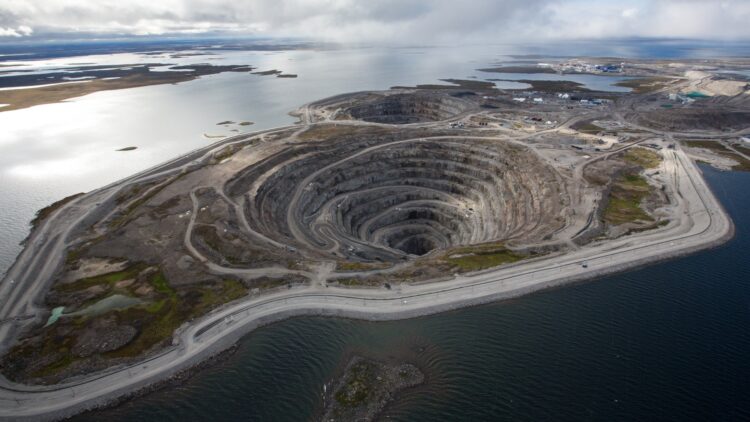While the global energy map is changing, the future and one of the most effective and innovative energy sources are hidden in the ground. The United States is preparing for the largest well-drilling project in history in the search for a resource that could define the future of energy.
Hydrogen, a clean and renewable energy source, is buried deep beneath the earth, and its promise is emerging as a light in the fight against global warming.
Exploring the Midcontinent Rift: A breakthrough in the search for natural hydrogen
This search for natural hydrogen brings the investigation to the earth’s center, where geologic processes have been ongoing for billions of years. Researchers at the University of Nebraska–Lincoln said they have located a specific area in the United States, the Midcontinent Rift, which is geologically favorable for hydrogen generation due to volcanic activity.
The break is over 1,200 miles from Lake Superior through parts of Minnesota, Iowa, and Nebraska and presents a remarkable chance to acquire a clean, renewable power source.
Hydrogen is one of the cleanest energy sources as it yields no carbon when burned as a fuel, unlike coal, oil, and natural gas. It is continuously being rejuvenated underground by a process where water comes into contact with volcanic rock to create the gas.
This process could continue for thousands of years, be a clean source of energy for millions of generations, and even be enough for the energy needs of the entire world for thousands of years.
Digging deeper into the future of clean energy: Challenges in tapping into natural hydrogen
In 2018, scientists started probing the globe’s first trial hole in search of the original hydrogen trapped in Nebraska. Despite some disadvantages, for example, the broken pump has stopped the possible tests measuring the potential gas supply, the results look very promising.
The authorities hope that the conditions in the Midcontinent Rift are suitable for storing hydrogen with no risks and for a long time. The rift is 3000 to 5000 ft below the surface, deep enough for storage but not too profound for drilling.
However, this project has the following challenges: The knowledge about the mechanisms controlling the generation, transportation, and concentration of abiogenic hydrogen in the subterranean environment is still limited.
Scientists are trying to determine the optimum method to tap the gas and how this could be commercially realized. The behavior of hydrogen with fluids and rock minerals in the underground area is challenging, and significant research and development are needed.
Could natural hydrogen be the key to clean energy? What’s next in this groundbreaking journey?
Utilizing natural hydrogen in the future global energy transition can be virtually unlimited. Should the Nebraska project be successful, it is possible to have a new source of energy that is clean and does not depend on the burning of fossil fuels.
Given that the US Geological Survey has suggested that billions of megatons of hydrogen could be stored under the surface, the potential for reducing greenhouse gas emissions is considerable. Further, hydrogen is well positioned to become a key fuel in industries that cannot be electrified, including manufacturing and large transport.
Its flexibility and high energy-to-weight ratio recommend it for fuel cells that could be used in anything from trucks to aircraft. The U.S. could harness the abundant, inexhaustible source of natural hydrogen to progress in the hydrogen economy and become a world leader in green power.
Future exploration and research: The journey to unlock the full potential of natural hydrogen
As the search for natural hydrogen goes on, the following research questions are being posed to define the future of this noble energy source. Among those, one of the most critical challenges is the identification of pathways and mechanisms for hydrogen migration and leakage from the subsurface to the surface.
Moreover, the researchers are exploring how microbes can use hydrogen and its compatibility with the present fluids in the subsurface. The questions are an area of focus for the research group at the University of Nebraska that has received funding from the National Science Foundation to elaborate computational models and experimental approaches to address these questions.
These insights will be crucial in defining the extent to which natural hydrogen can be produced safely and efficiently. It may also open up the way for technologies that can extract hydrogen from deep within the earth as the project proceeds, making energy hydrogen abundant.
The Midcontinent Rift System is the solution to a brighter, greener energy future. The United States stands on the precipice of tapping into what experts believe is the power of natural hydrogen that can potentially change the energy-producing and consuming industry.
While scientists go on with research to unlock this energy resource buried under the earth, the world gets closer to a future in which hydrogen will be the source of clean energy. This begins an exciting journey, for it is the largest well in history.

